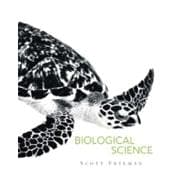
UNIT I. THE ORIGIN AND EARLY EVOLUTION OF LIFE.
UNIT II. CELL FUNCTIONS.
UNIT III. GENE STRUCTURE AND EXPRESSION.
UNIT IV. DEVELOPMENTAL BIOLOGY.
UNIT V. EVOLUTIONARY PATTERNS AND PROCESSES.
UNIT VI. THE DIVERSIFICATION OF LIFE.
UNIT VII. HOW PLANTS WORK.
UNIT VIII. HOW ANIMALS WORK.
UNIT IX. ECOLOGY.
Combined Volume
The New copy of this book will include any supplemental materials advertised. Please check the title of the book to determine if it should include any access cards, study guides, lab manuals, CDs, etc.
The Used, Rental and eBook copies of this book are not guaranteed to include any supplemental materials. Typically, only the book itself is included. This is true even if the title states it includes any access cards, study guides, lab manuals, CDs, etc.